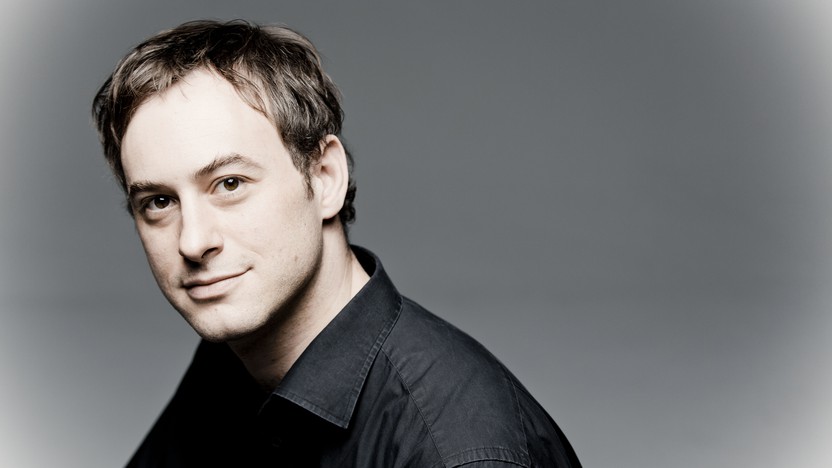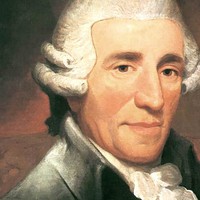Haydn’s Morning, Noon and Evening Symphonies with Jonathan Cohen

Sponsored By
- January 25, 2019

- January 26, 2019


Sponsored By


 Listen to Audio
Listen to Audio
The Morning Symphony opens with a slow introduction. The first violins enter alone, then the second violins join in harmony and soon the entire orchestra surges to a bright climax, like a sunrise breaking over the horizon. The fast body of the movement begins with a melody played by flute alone, the first of many solo passages that show this symphony to be a descendent of the concerto grosso (a collective concerto for multiple soloists and orchestra) as much as it is an offspring of the operatic sinfonia or overture.
The slow movement, scored without winds, emphasizes solo parts for violin and cello. Instead of continuing to the fast finale in the manner of a three-part Italian sinfonia, Haydn borrowed from the French dance suite and inserted a Menuet, a court dance marked by its stately pulse of three beats per measure. Through Haydn’s influence, the minuet (and later, in Beethoven’s adaptation, the scherzo) became an indispensable component of a symphony. Even in this very early example of symphonic form, the finale displays Haydn’s typical panache, like how he turns a simple melodic gesture of a rising scale into a pervasive, energizing accompaniment figure.
Aaron Grad ©2018
 Listen to Audio
Listen to Audio
(Duration: 21 min)
In 1761, the 29-year-old Franz Joseph Haydn accepted a job with the Esterházy family, a fantastically wealthy and cultured branch of the Austrian nobility. Over the next thirty years, the music that the inexhaustible Haydn created for his demanding patrons played a defining role in advancing what we now recognize as “Classical” style.
For his first five years, Haydn served as Vice-Kapellmeister, and one of his duties was to produce twice-weekly concerts with the court’s private orchestra. The ensemble was small in those early years, ranging from 13 to 15 players, but each member was a world-class virtuoso. Haydn dabbled in composing symphonies before his Esterházy job, but it was there during those first years that he really embraced the genre, composing about 25 of them, or nearly a quarter of his lifetime output. The first came in the form of a symphonic trilogy connected to times of day — “Le matin” (Morning), “Le midi” (Midday) and “Le soir” (Evening) — an idea that may have been suggested by Prince Paul Anton Esterházy.
The middle symphony, Midday, provides a fascinating snapshot of orchestral music during a period of transition, when Baroque complexities began to clarify into the refined Classical style. With its many solo passages for individual instruments, this conception of a symphony is a natural extension of the Baroque concerto grosso tradition that placed multiple soloists within a larger ensemble. Other details point to the full-throated symphonies of the coming decades, including the dramatic suspense of the first movement’s slow introduction, and also the appearance of a minuet, an idea borrowed from French dance suites that expanded the earlier, three-part form of the Italian sinfonia. The most surprising departures from symphonic expectations come in the highly theatrical slow movement, complete with a declamatory recitative and an extended cadenza for violin and cello.
Aaron Grad ©2024
 Listen to Audio
Listen to Audio
Like its siblings, the Evening Symphony includes ample solo passages in the manner of a Baroque concerto grosso. But many other details of form, harmony and orchestration point to Haydn’s mature symphonic voice, a craft he explored in nearly 100 more works over the next thirty-plus years. Perhaps the most distinctive and Haydnesque moment comes in the first movement’s recapitulation, when a held chord momentarily diverts the harmony to the “wrong” key. Haydn was a master of the Sonata-Allegro form that organizes this and most other symphonic first movements, playing off the listener’s expectations for a particular resolution.
The new color in the slow movement is a solo bassoon, which works with the solo cello as a tenor-range counterpart to the two solo violins in the soprano register. Continuing the pattern from the two previous symphonies, a solo contrabass adds a distinctive growl to the contrasting trio section. As a bookend to the sunrise that begins the trilogy, the finale, labeled La Tempesta, engages in literal scene painting by conjuring a storm full of descending swoops and arpeggios.
Aaron Grad ©2018
Get driving directions and find nearby parking.
Find dining options close to the venue.
View seating charts to find out where you'll be seating.
SPCO concerts are made possible by audience contributions.
For exclusive discounts, behind-the-scenes info, and more:
Sign up for our email club!
